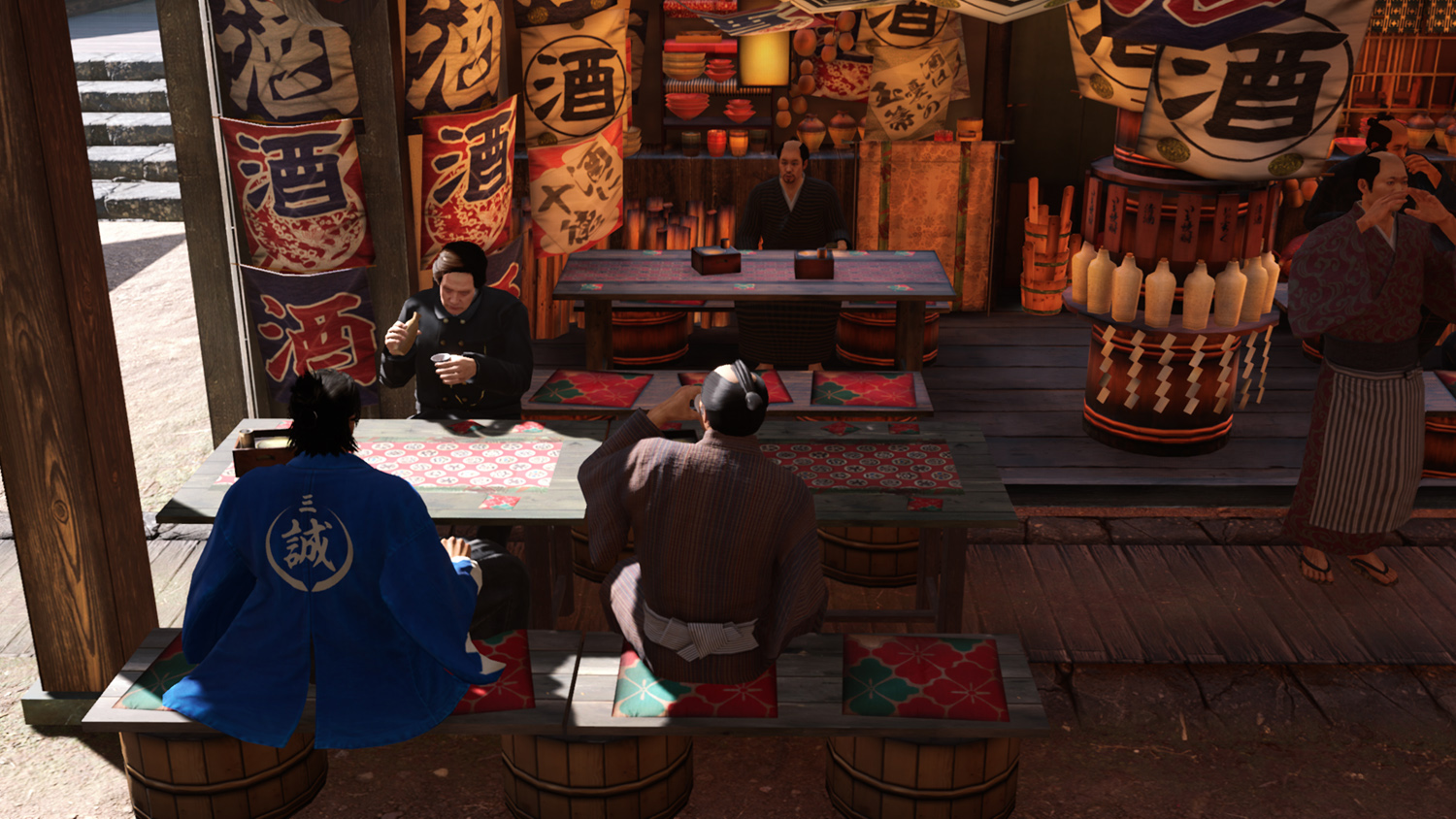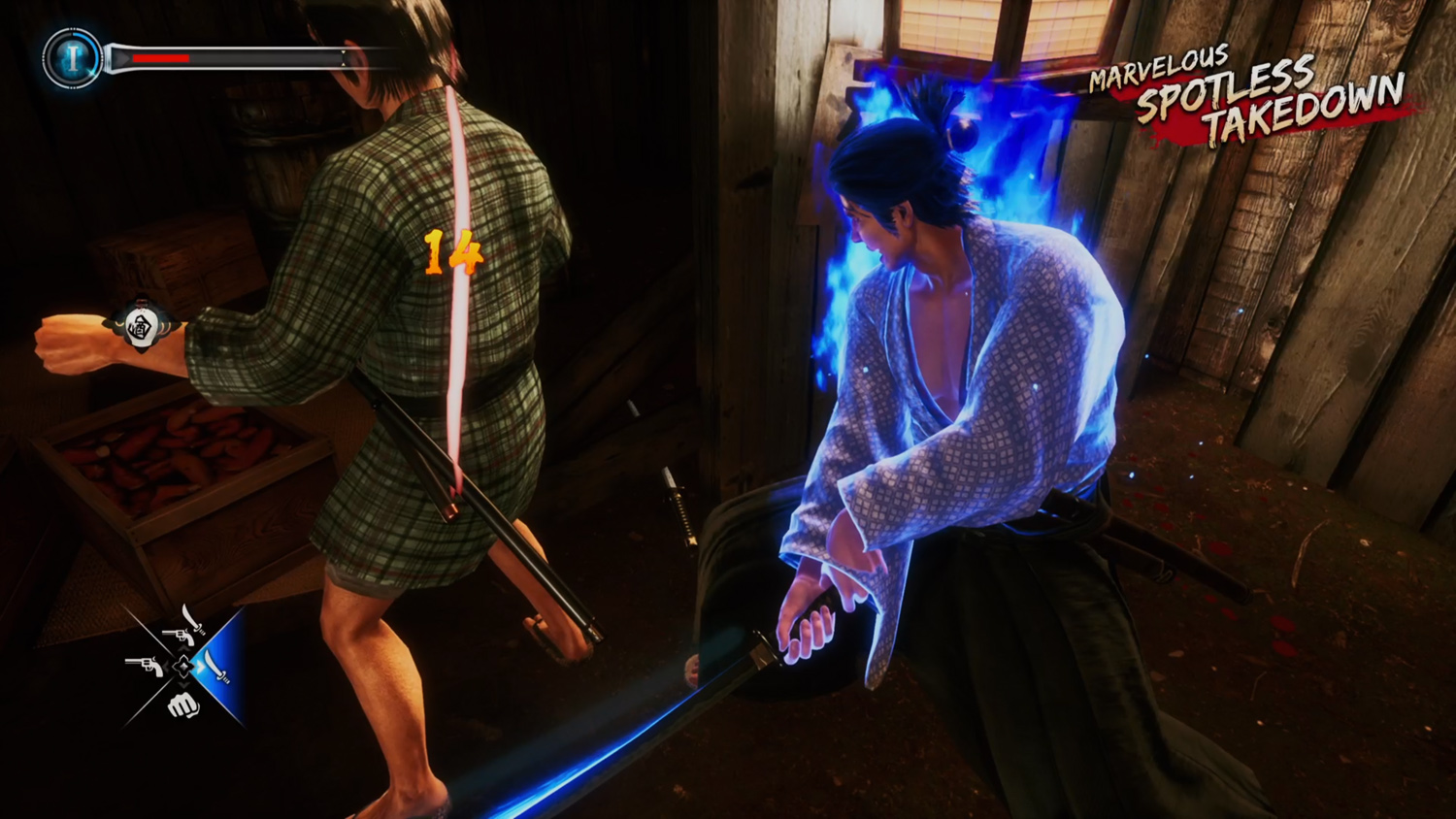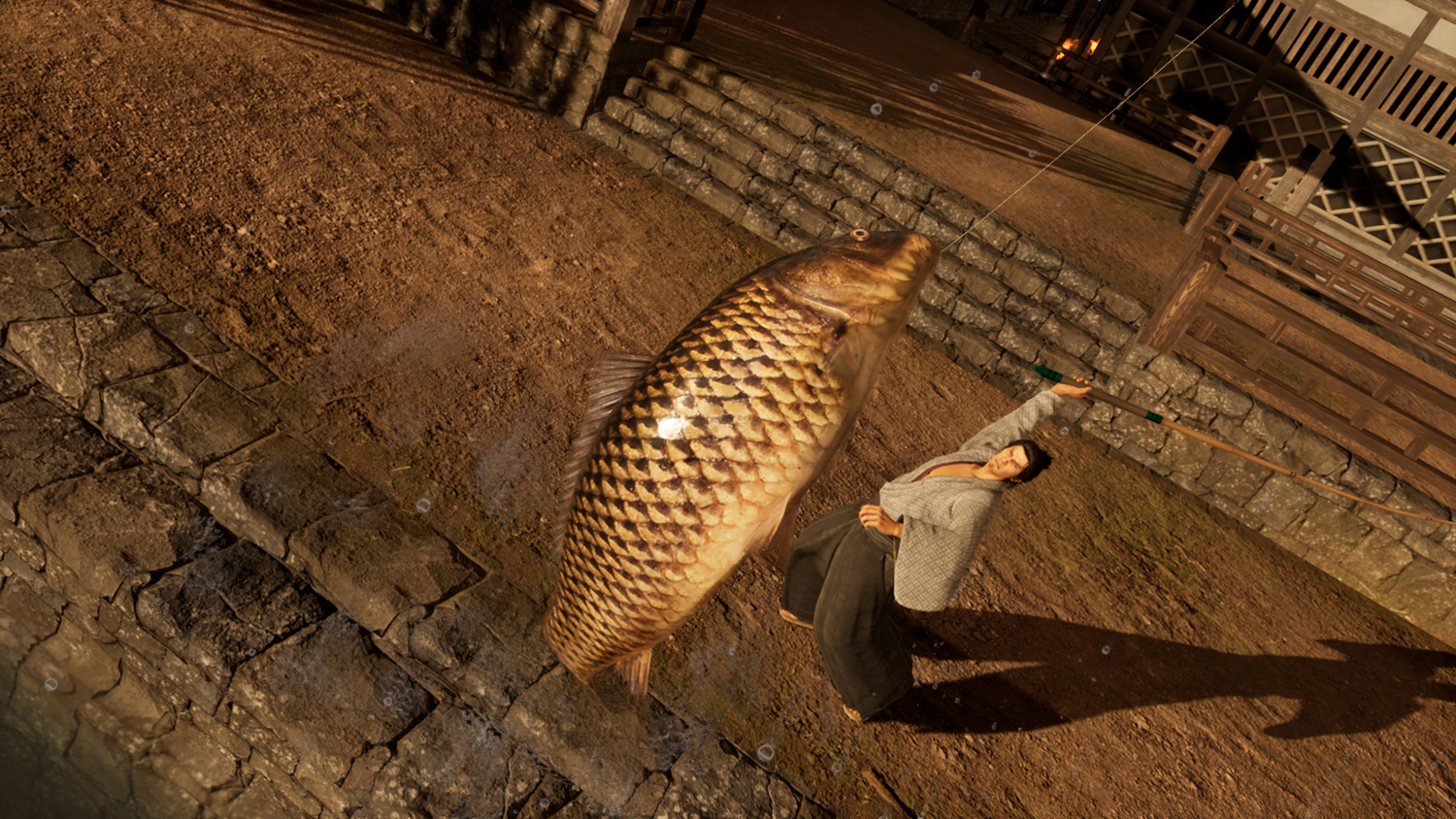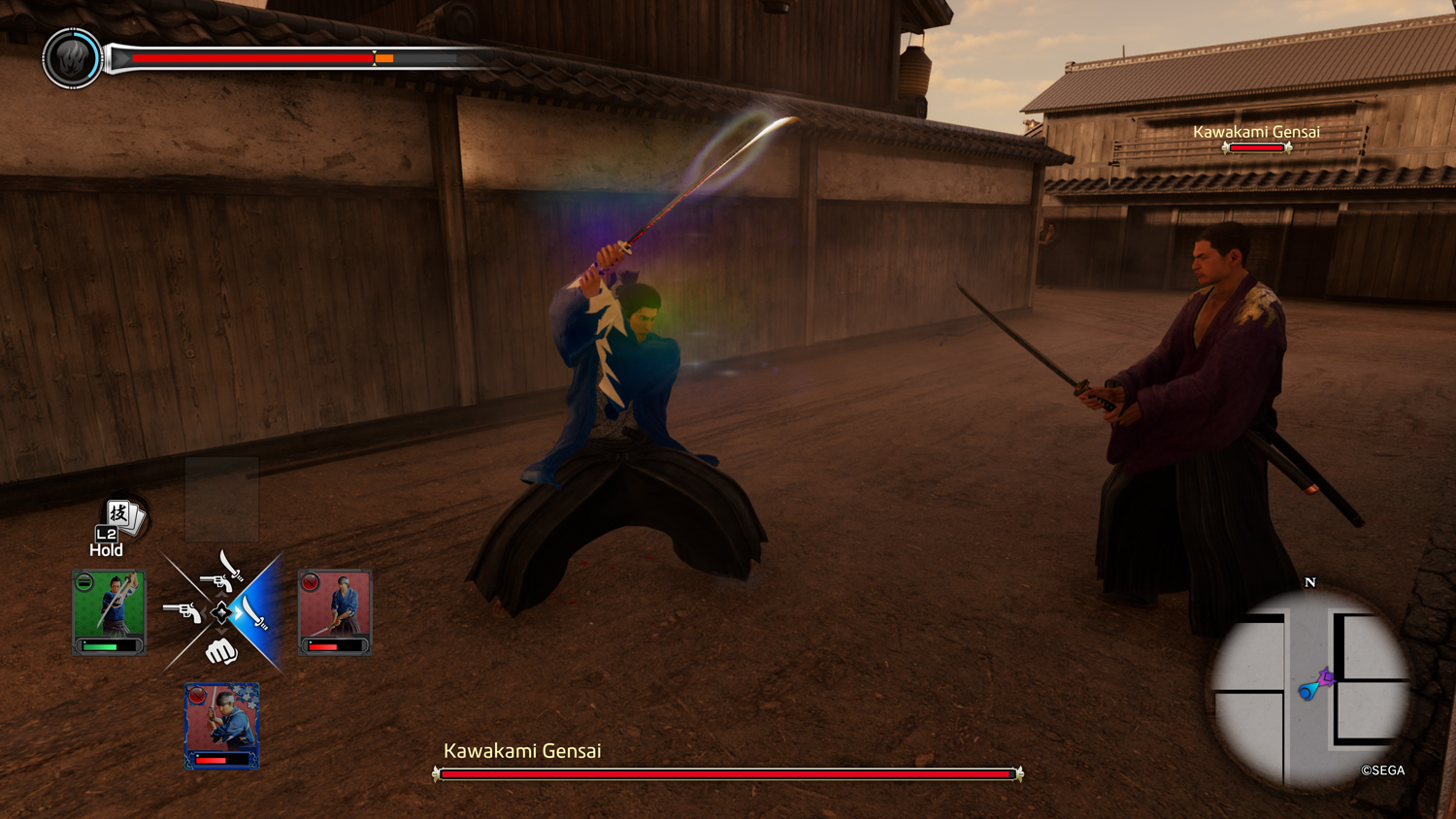Like a Dragon: Ishin review – twilight samurai
Sega’s cult Yakuza series goes back in time in this samurai spin-off

Sega’s Yakuza games may not be global blockbusters, but the series has steadily transformed from a once-niche Japanese curio to one much better recognised outside its home market. Now known as a more literal translation of its native language title, Ryu Ga Gotoku, latest entry Like a Dragon: Ishin both moves the franchise forward and throws it back in time, swapping 80s organised crime for late 19th century samurai.
It’s a good entry point for those new to the series, as the characters and locations are completely different. Fans will no doubt recognise familiar faces from past games – think of it like actors playing different roles in a costume drama.
Like a dragon age


Ishin has been rebuilt from the ground up for modern platforms on Unreal Engine, but is actually more of a remaster of the original spin-off, released on PS3 and PS4 in Japan back in 2014. That means its presentation can feel a bit dated compared to modern remakes like The Last of Us Part 1 and Dead Space, or even the series’ own more recent releases.
19th century Kyo (these days known as Kyoto) might not be as bustling as contemporary Tokyo, but there’s still a liveliness to it – merchants hawk their wares on carrying poles, women ritualistically sprinkle water outside their shops, and samurai freely roam the streets carrying katanas.
They’re not all the honourable figures exoticised by Westerners: many are masterless ronin just looking for a fight, while others are part of the Shinsengumi, a feared paramilitary police no better than armed thugs who maintain order in a time of socio-political unrest. It’s this group that protagonist Ryoma (based on a real historical figure) infiltrates on a quest to find his patriarch’s killer, while unwittingly playing a role in altering the country’s future.
There’s fascinating insight into 19th century Japanese history, helped by a glossary of terms available through the pause menu – though arguably it doesn’t go far enough, as Ishin is just as guilty as the mainline series for having very wordy cutscenes. At least characters are rendered in much better detail during the more cinematic moments, the close-ups really allowing you to examine every scar or pore on someone’s face.
Bringing a gun to a sword fight


The plot has lots of political machinations and double-crossing twists, but Ryoma is a simple man who deals with his problems using his fists. Or at least that’s one option. As a samurai he can fight with a katana, and to remind us of the dawn of modernity, he also wields a pistol. There’s a stance that uses both, spinning your blade around then firing a random volley of bullets at surrounding enemies.
Switching between stances can be done on the fly with the d-pad. The soul orbs earned during combat often match the stance you’re currently using, which incentivises sticking with a certain playstyle. And if impaling your enemies or putting holes into them isn’t brutal enough (though in that bizarre Yakuza logic, most of your opponents don’t actually die), you can also build up a heat gauge. This opens contextual prompts for even more cinematic takedowns, like slamming them into a wall or booting them into the river.
Once Ryoma becomes a Shinsengumi captain, you also unlock Trooper Cards, which can activate stat buffs and more obscure special moves. Think thunder bolts that electrocute multiple enemies or a fire breathing attack that burns foes in front of you. Some cards are earned fighting masked enemies on the street, while the rarest need to be unlocked through a sort of loot box mechanic using your in-game currency.
Sword fights might be fun, but boss fights can be a bit of a spongy affair where it feels like your most powerful attacks barely do more than chip their health bar. They often become a battle of attrition provided you brought enough healing items. Fortunately, you have the option to turn the difficulty down after the second defeat, and no one would hold it against you.
Killing time in Kyo


Besides narrative and combat, Like a Dragon: Ishin’s other key ingredient is the time you spend just killing time. Classic series minigames are given a historical twist, where instead of a baseball batting cage you’re slicing incoming cannon balls with your katana, or you’re singing on stage in a bar rather than an 80s karaoke booth. The main series’ seedy vibes are channeled in the red light district, although the games are more imaginative than something you’d see in GTA. And on the more wholesome end is an in-depth farming sim, where you can use the ingredients to cook meals and sell for a profit. Even with fast travel points for getting around, you’re bound to run into something that piques your interest.
It’s the many side quests discovered by interacting with the locals that really give the game its character. Some explore the socio-political tensions of the era, like the xenophobia facing Western traders, while others are incredibly daft: you’re either tracking down a mochi thief, fighting sumo wrestlers in a brothel, or chasing muggers in your underwear after they made off with your clothes at the bathhouse.
Some activities are more repetitive or throwaway than others, but the beauty is you never quite know what you’re going to get. Those who get really sucked into 19th century Kyo will find hours more entertainment in the post-game.
Like A Dragon: Ishin verdict

Having been rebuilt to closely resemble the original game, Like a Dragon: Ishin isn’t as much of a looker as other modern remakes. But it makes up for that with the series’ trademark idiosyncratic charm. It’s a historical drama that’s also happy for you to lose your time betting on chicken races or being a rural master chef.
For series fans and newcomers alike, it’s a delicious piece of previously forbidden fruit. Who says history can’t be fun?
Stuff Says…
Both an authentic and irreverent exploration of 19th century Japan, this spin-off retains much of the classic Yakuza formula
Good Stuff
Fascinating depiction of 19th century Japan
Lots of peculiar, memorable and wacky things to do
Variety of samurai combat styles and trooper card mechanics
Bad Stuff
Visually and technically showing its age
Pretty lengthy cutscenes
Spongy bosses



